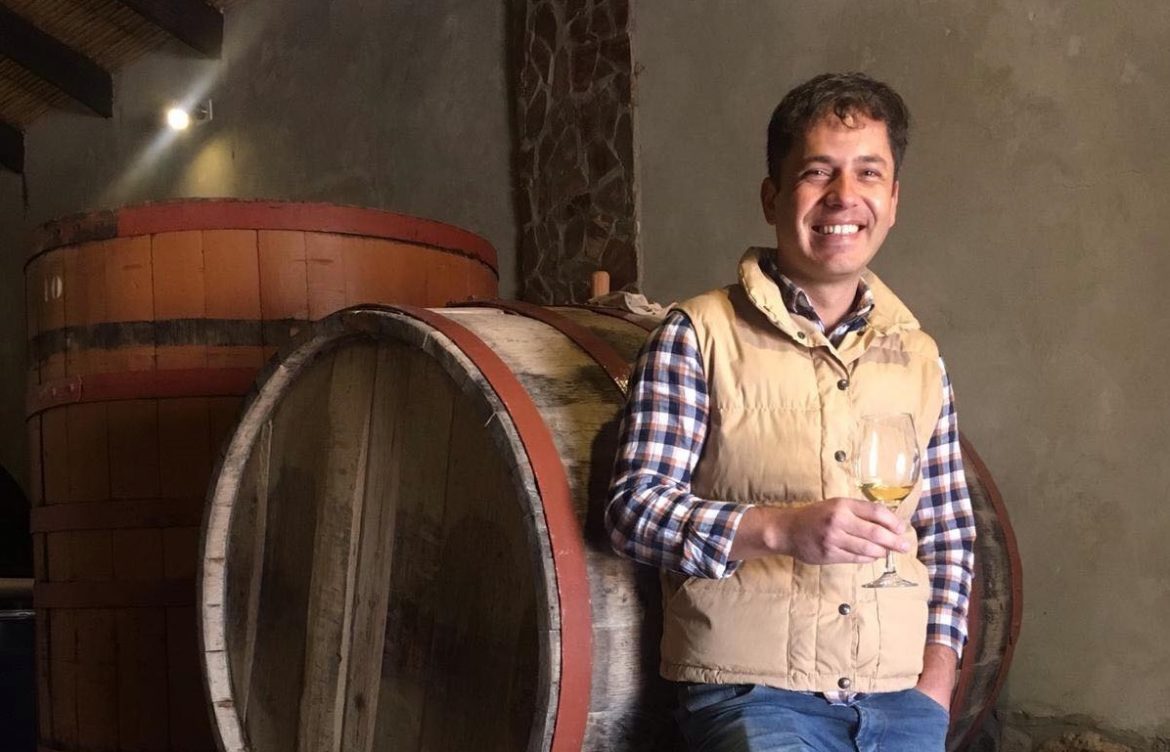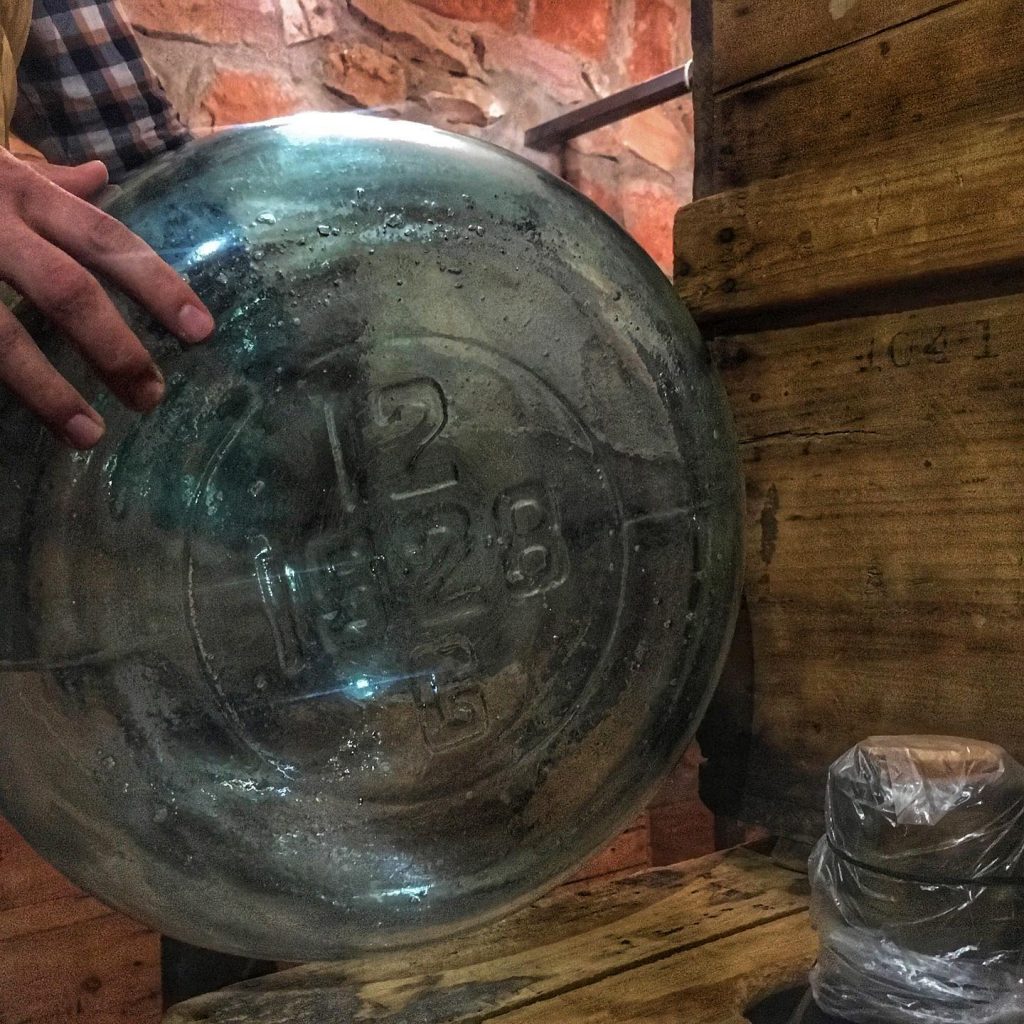Bolivia has been producing wine for over 500 years and has a rich viticultural and winemaking history, which winemaker Marcelo Vacaflores is keen to keep alive. In this interview, Amanda Barnes discovers why Marcelo is trying to conserve Bolivian wine traditions and ancestral wine making techniques; in particular, the use of glass damajuanas- or demijohns.
These glass containers embody the history of prosperity and exchange between the mining industry in Potosí and wine and Singani production in the Cinti Valley back in the 1500 and 1600s. Marcelo also discusses why restoring traditional criolla grape varieties in Bolivia- notably Muscat of Alexandria– is paramount for the future development of Bolivian viticulture.
Interview with Marcelo Vacaflores in the Cinti Valley, Bolivia
So, Marcelo, we’re here with your demijohns. Can you tell us a little bit about how they ended up in the Cinti Valley?
There was always an exchange between Cinti and Potosí thanks to the wine and Singani industry. So, demijohns originally came about as a way of reusing the containers used to store mining chemicals in Potosí. Here in Cinti, we started to use these containers to store wine and we maintain this tradition today.
Perfect. So, you stack up these boxes to create several levels but what are the other advantages of making wine in glass demijohns?
I personally like this system a lot. Many generations of my family have used this system to make wine because it allows you to obtain a really pure expression of the grape variety; as if you were producing the wine in the bottle from the very beginning. For us, it is like a huge bottle which holds 50 to 60 litres of wine which is left to age.
However, the size of the bottle allows us to prolong the ageing process. This gives the wine a really pure expression of the grape. Moreover, we love this system because it allows us to ensure that the wine is stored correctly.
Fantastic. So, this is a 2016 vintage that we are tasting today, which also has some floral notes so typical of the variety. But what would you say characterises the Muscat of Alexandria from the Cinti Valley? How would you describe the pure expression of this particular grape?
I would say that Muscat is the most important grape, not only in the Cinti Valley but throughout Bolivia. It is definitely the grape that we are known for. As well as using Muscat to make wine, we also make Singani and we eat the fruit, too. Therefore, it is a grape that has many different uses for us, which is probably the reason why we love it so much and we grow it so much in Bolivia.
In this Muscat, there is a real expression of the terroir and the chalky soil of the valley. The aroma of the Muscat grape also really stands out, which is typical here because of the altitude and the age of the vines.
What is the altitude here and how old are the vines?
Here, in the winery, we are at an altitude of 2,400 metres above sea level and the vineyards where we source the grapes from are also at an altitude of around 2,300 or 2,400 metres. The vines are between 80 to 100 years old.
Something that is really unique and interesting about winemaking here is that as the grapes grow upwards, they wrap themselves around the trees. Can you tell us a little bit about this production process?
Well, here we continue to use the old vines and we also have three types of plants: the Molle, the Chañar and sometimes the Algarrobo tree. These act as living plants that help to train and hold up the vines. In fact, this system dates back to the colonial period and continues to be used here to grow our vines.
Fantastic, and something to look out for in the Moscatel from Cinti Valley is the flavour of the Molle tree – this hint of pink pepper which gives it a little kick!
Yes, exactly. Something which is really unique to the growing process here is that the Molle tree is very closely related to the pink peppercorn plant and that’s why we call it a ‘fake pepper’. This gives a really special characteristic to the grape variety. We notice that it is particularly strong during the fermentation process and then becomes a bit milder during the ageing process.
Very interesting. What would you say is the perfect pairing for this wine?
I really like goats cheese. Here, there are a lot of goats, so we make a lot of goats cheese. I also like to pair certain dessert wines with quince; which is also really delicious.
That sounds like a delicious pairing! Thank you, Marcelo, for telling us about the history behind your demijohns and the importance of traditional winemaking in Bolivia.
Read more about the history of Bolivian wine or check out our wine lover’s guide to Bolivia.
Find out more about Marcelo Vacaflores and many more bodegas in our Bolivia Winery Guide.

